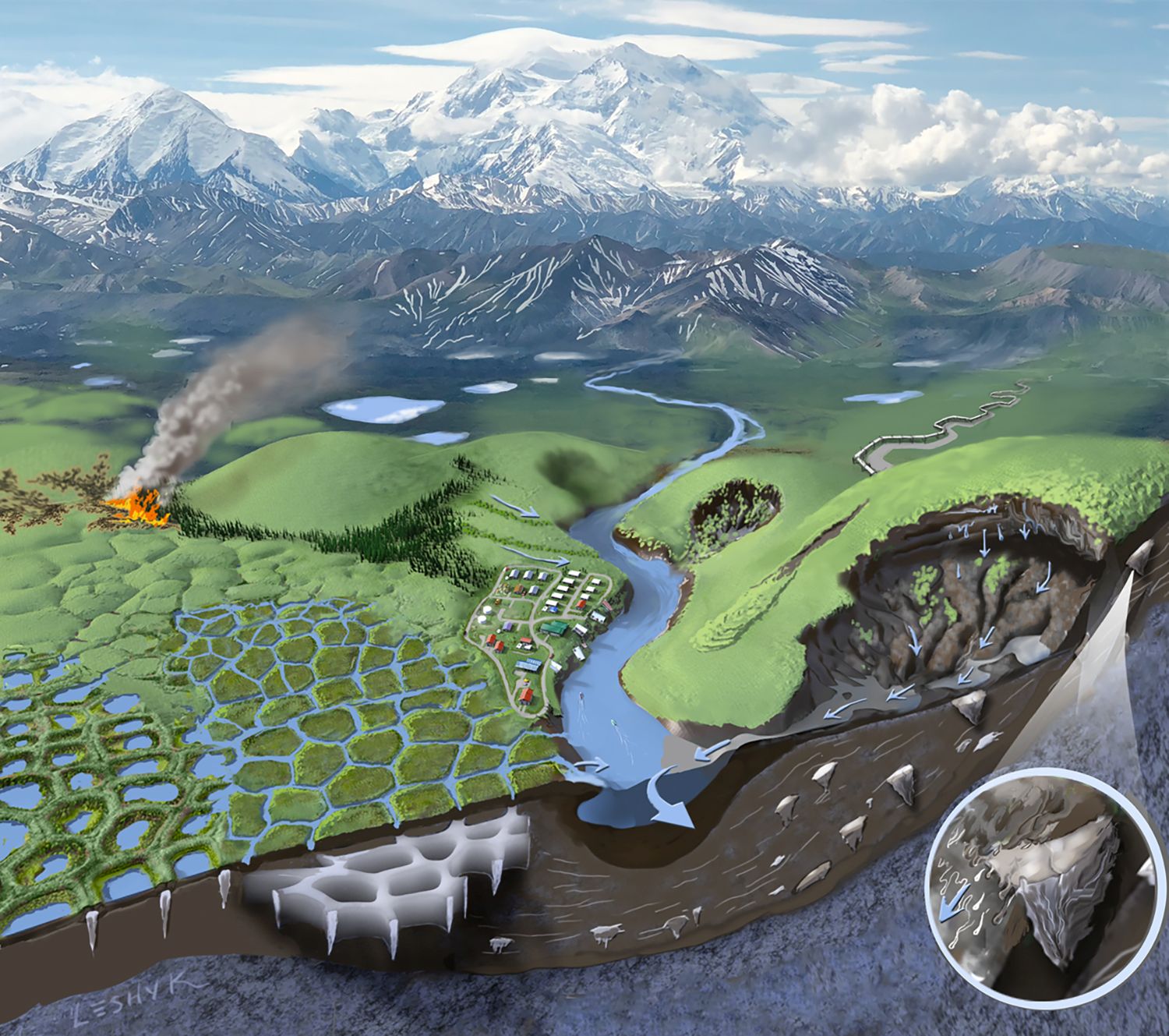Search Results for: black ta
Abrupt thaw could boost permafrost carbon emissions, new study finds
The abrupt thawing of permafrost may affect up to half of all carbon stored in the layer of frozen Arctic soil, according to a new study in Nature Geoscience, and could double permafrost’s contributions to global climate warming compared to some previous model estimates that focused on gradual thaw alone. […]
Welcome
The Center for Ecosystem Science and Society at Northern Arizona University studies how ecosystems respond to and shape environmental and climate change and works to communicate those discoveries in new ways to local and global communities. Collaborating with national laboratories and home to state-of-the-art research facilities, Ecoss trains scientists to […]
Seasonal patterns of nonstructural carbohydrate reserves in four woody boreal species
Plants store nonstructural carbohydrates (NSCs), such as sugars and starch, to use as carbon and energy sources for daily maintenance and growth needs as well as during times of stress. Allocation of NSCs to storage provides an important physiological strategy associated with future growth and survival, and thus understanding the […]
Fuel-reduction management alters plant composition, carbon and nitrogen pools, and soil thaw in Alaskan boreal forest
Increasing wildfire activity in Alaska’s boreal forests has led to greater fuel-reduction management. Management has been implemented to reduce wildfire spread, but the ecological impacts of these practices are poorly known. We quantified the effects of hand-thinning and shearblading on above- and belowground stand characteristics, plant species composition, carbon (C) and […]
Spatial and temporal variation in moss-associated dinitrogen fixation in coniferous- and deciduous-dominated Alaskan boreal forests
Dominant canopy tree species have strong effects on the composition and function of understory species, particularly bryophytes. In boreal forests, bryophytes and their associated microbes are a primary source of ecosystem nitrogen (N) inputs, and an important process regulating ecosystem productivity. We investigated how feather moss-associated N2-fixation rates and contribution […]
Cross‐scale controls on carbon emissions from boreal forest megafires
Climate warming and drying is associated with increased wildfire disturbance and the emergence of megafires in North American boreal forests. Changes to the fire regime are expected to strongly increase combustion emissions of carbon (C) which could alter regional C balance and positively feedback to climate warming. In order to […]
Fuel-reduction management alters plant composition, carbon and nitrogen pools, and soil thaw in Alaskan boreal forest
Increasing wildfire activity in Alaska’s boreal forests has led to greater fuel reduction management. Management has been implemented to reduce wildfire spread, but the ecological impacts of these practices are poorly known. We quantified the effects of handthinning and shearblading on above- and belowground stand characteristics, plant species composition, carbon […]
Gap regeneration within mature deciduous forests of Interior Alaska: Implications for future forest change
Increased fire severity in boreal forests of Interior Alaska is shifting forest canopy composition from black spruce (Picea mariana) to deciduous species, including trembling aspen (Populus tremuloides) and Alaska paper birch (Betula neoalaskana). Because deciduous trees are less flammable than black spruce, the dominant disturbance regime in deciduous forests could […]
Ecoss does Ecosystem Science in the Park
Water plus soil makes mud, right? It’s definitely mud when it’s on the kitchen table at home. But for the Center for Ecosystem Science and Society (Ecoss), water plus soil makes paint, and it enjoyed centerpiece status on our table in Science in the Park in Flagstaff, last weekend, part […]

